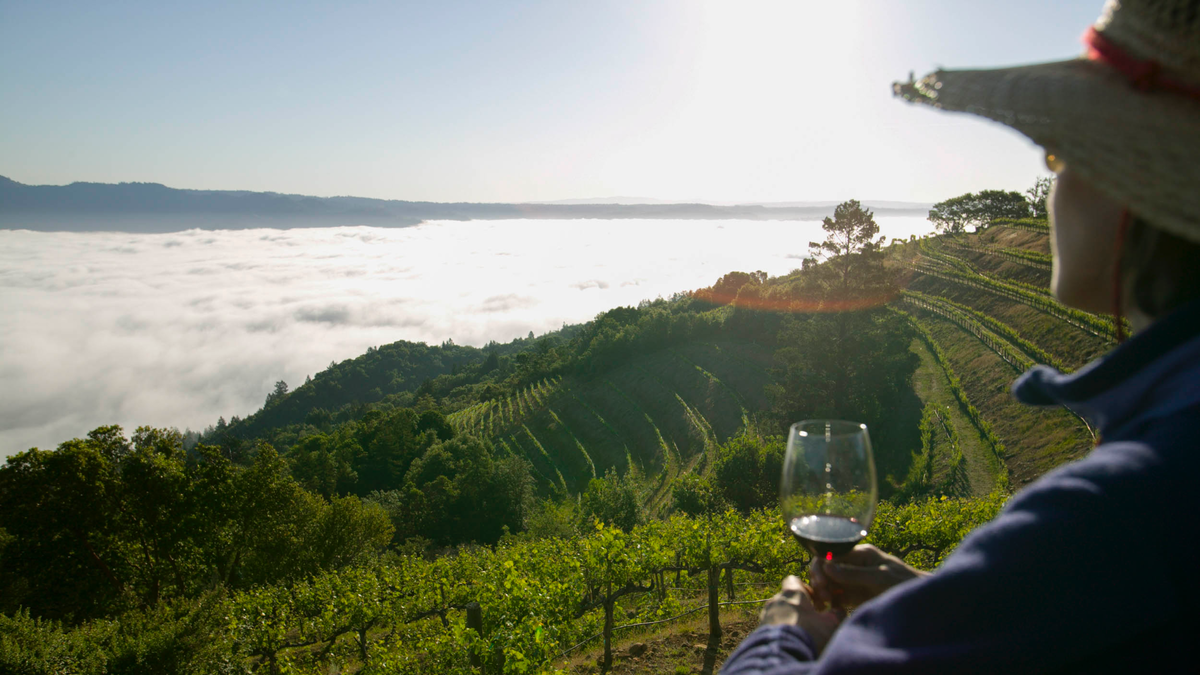How climate change will alter the taste of the world's great wines
Be prepared for flavour fluctuations as rising temperatures reduce acidity and boost sugar levels.

When you grab a bottle of wine off a retail shelf, you have certain expectations about the wine’s smell and taste. Some Champagnes are richer and rounder than others, but all share refreshing acidity and bright, edgy, mineral, and chalk flavors that wake up taste buds.
In 2019 the region’s grapes were very ripe, but because they were balanced by superhigh acidity, the classic style prevailed this year. Harvests will not always be that way.
In simple terms, soaring temperatures from global warming lower acidity in grapes and increase sugar, which yeast turns into higher alcohol during fermentation. Heat also affects trace compounds in the grapes that contribute to flavor and aroma.
More body and bulk, less subtlety
Gaia Gaja, whose family owns an eponymous winery in Italy’s Piedmont, points out the most obvious taste changes: “Wines are becoming fuller-bodied, more alcoholic, and riper in flavor.” She worries that subtle notes and fleeting, delicate aromas that add so much to wine’s drinkability are at risk.
Warmer conditions shift red wine flavors from red fruit notes like raspberry and cherry toward black fruit tastes such as blackberry. They flatten aromas and the refreshing brightness that gives wines energy.
In the Rhône Valley, summer heat is already pushing alcohol levels to 16%, about the strength of sherry. Some wine domaines - Charbonniere, for instance– plan to blend small amounts of bourboulenc and clairette, white grapes, into their reds to give more freshness to the wine in the glass.
Because of warming, grapes ripen more rapidly, and in many regions harvest is two weeks earlier than it once was.
“With a shortened growing cycle, there’s also a risk that sugar and flavor ripening get out of sync and flavor ripening doesn’t reach its full potential,” says Kimberly Nicholas, senior lecturer at Lund University Centre for Sustainability Studies in Sweden. "Finding the sweet spot, when sugar, acid, color, tannin, and flavor in the grapes are in perfect harmony, will be more and more difficult."
The changing profile of Burgundy
However, there’s also a plus side. Global warming has helped cooler places such as Burgundy produce more exceptional vintages, says Philippe Drouhin of Maison Joseph Drouhin, one of the region’s largest and most diverse estates. “Even if the flavor profile changes in the future, that doesn’t mean the wines won’t be as good,” he says.
As temperatures climb, though, Burgundy may say goodbye to the silky, elegant style pinot lovers prize. It may survive in other borderline regions, such as the west Sonoma coast, fanned by cold Pacific winds. Research climatologist Gregory Jones, a professor at Linfield College in Oregon, says the average growing season temperature for great pinot needs to be in the range of 14-16° celsius (57-61°F).
Some taste changes are definitely for the better. Take Germany’s once anemic pinot noirs. Most of the country’s regions used to be too cold to ripen these finicky grapes every year; now the wines are increasingly fleshy, seductive, and delicious.
New tastes from new regions
The world’s wine map is shifting, and familiar grapes planted in surprising new regions and terroirs will offer even more intriguing taste differences. That’s happening in southern England, with lemony, edgy sparkling whites. By 2050, Idaho, Norway, and Sweden may be the source of some of the world’s great wines.
In the meantime, Bordeaux, Napa, and other places are looking to grapes from southern Europe that better tolerate heat and drought and maintain high levels of acidity. Some top châteaux, such as Pomerol’s Château Lafleur, are cutting back on early-ripening merlot because it produces wines too high in alcohol.
This summer, Bordeaux began loosening appellation regulations that permit only classic red and white varieties to be planted. A key winemaker group voted to allow seven new varieties, including marselan, touriga nacional, and white grape petit manseng, which have different tastes.
For now, they’ll be used only for basic Bordeaux wines, not by top châteaux, a small part of the typical blends with classic varieties. Final authorization is due next year.
In Spain, Miguel Torres, who’s reviving almost extinct grapes that thrive in hotter, drier climates, has identified five that offer exceptional flavors, such as floral-scented forcada, a white with striking citrus, herb, and mineral notes.
Napa’s ever-experimental Dan Petroski, winemaker at Larkmead in Calistoga, has planted a 1.2 hectare (3 acre) parcel with zinfandel, tempranillo, and more varieties to blend with cabernet in the future, to add color and density to keep the valley’s plush, sun-kissed style. “With wine you better think 20 years ahead,” he says.
As far as next year is concerned, many regions saw a very promising harvest in 2019. Changes will be subtle. As Petroski points out, “The end of Napa cabernet is a long way off.”



Qantas - Qantas Frequent Flyer P1
23 Aug 2014
Total posts 147
Thanks Elin, for contributing to the potential multilayered impact of climate change as it applies to the onboard experience for premium travellers
Hi Guest, join in the discussion on How climate change will alter the taste of the world's great wines